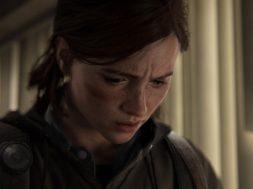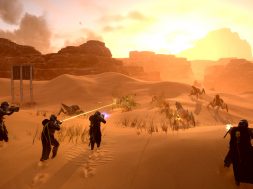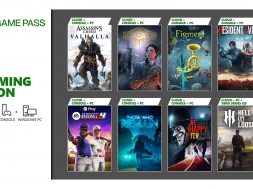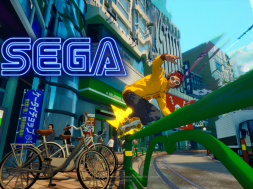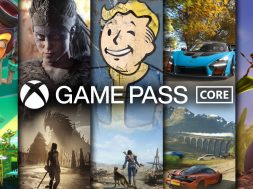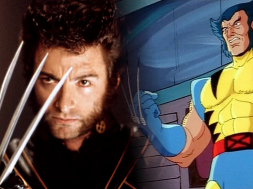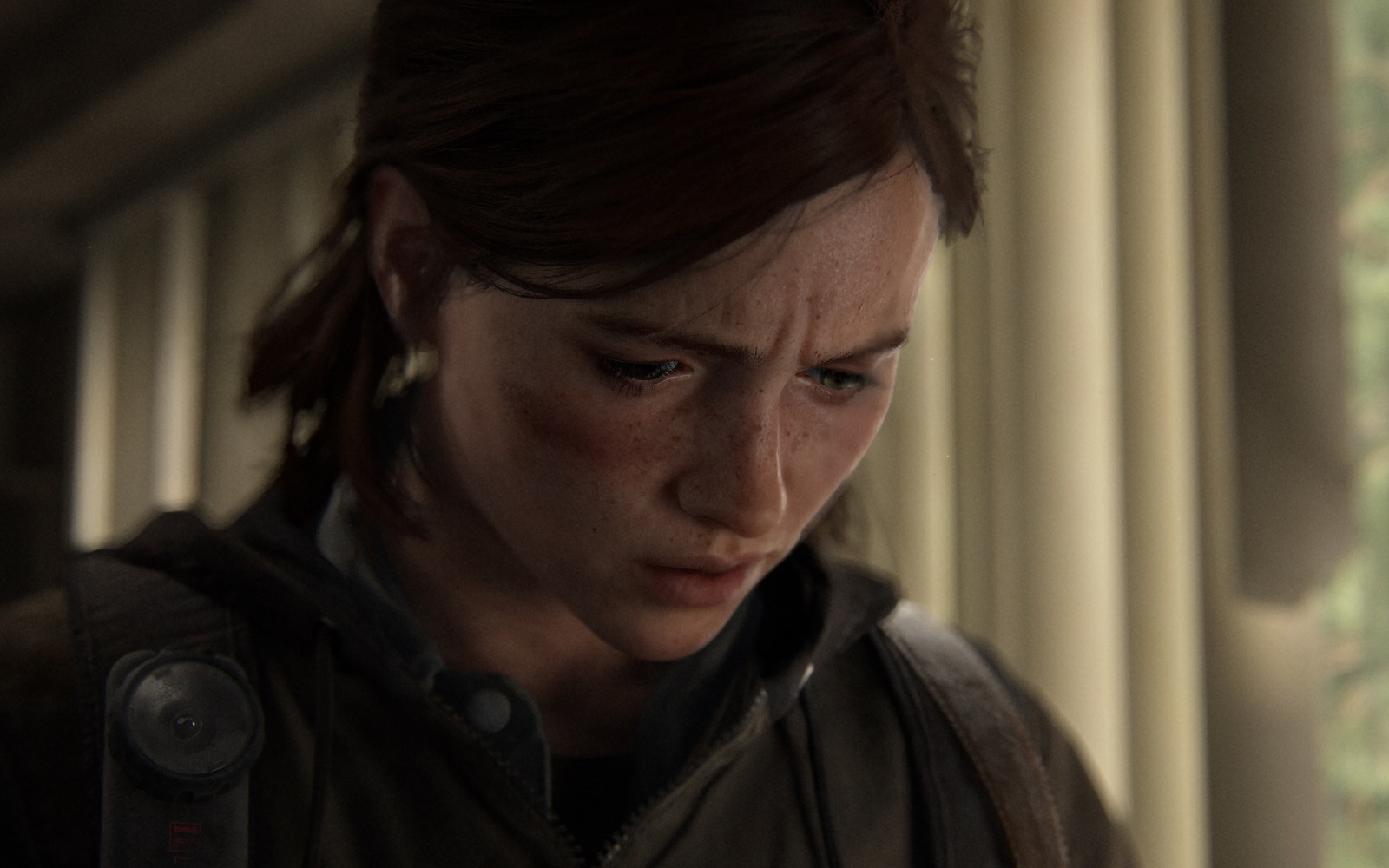 9.5
9.5 Stepping back into world of The Last of Us was a jarring proposition at first. The 2013 original was a finely crafted title, with a strong narrative that took a look at what you would do for the people you care for. It’s post-apocalyptic setting was a brutal trek across parts of the US, as you clashed with the horrors of the new world, be it the human factions or the fugal based transformed creature, that spawned in the wake of a world altering pandemic.
Like its predecessor, The last of Us Part II is a thought provoking journey through a dark world, that makes you reflect on your actions and puts you in very uncomfortable situations. Set around five years after the events of the original, Joel and Ellie have been living in Jackson Wyoming, as part of a flourishing community. Life is a new normal, with activities to complete like patrols around the surrounding areas. This new life is threatened and this draws Ellie out of her comfort zone and sets her on a path of revenge, due to repercussions of events tied to her past.
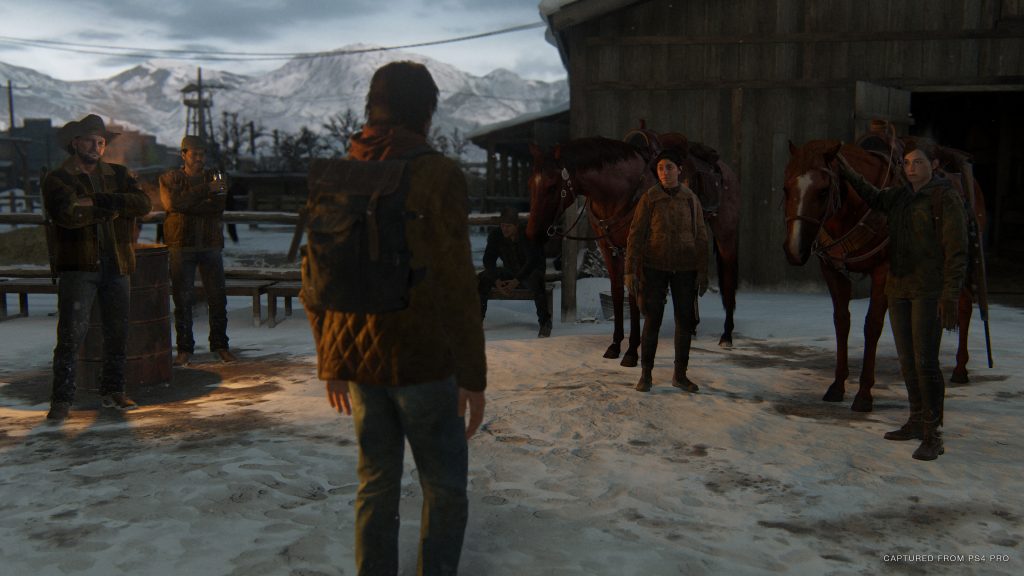
You as the player, travel to Seattle in search of answers. Feeling Ellie’s frustration and anger, you are on board with this journey and feel her pain during it. This urge for redemption drives you through this horrifying world and you will face deadly factions of humans known including the Washington Liberation Front (WLF), a religious like group called the Seraphites, as well as the familiar hoards of infected creatures. A commonality these factions have, is their disdain for outsiders, as you are treated in a very hostile manner. You will have to use ever tool and skill at you disposal to take out, avoid and survive these encounters.
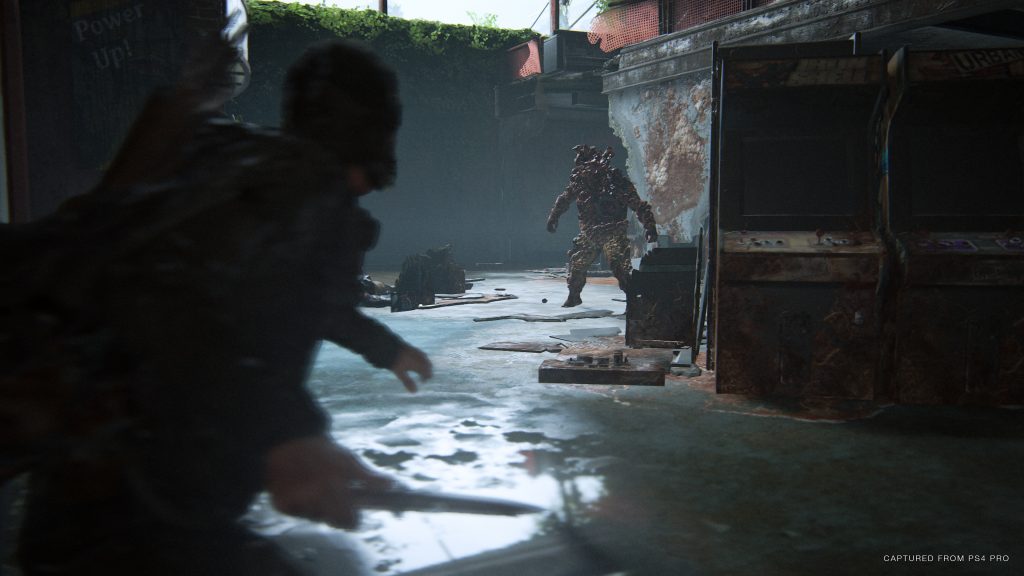
Gameplay in The Last of Us Part II is similar to the first game. You asses an area filled with your enemies and traverse the encounter using guns, makeshift weapons like Molotov cocktails or smoke bombs and melee weapons like axes or your trusty knife. Changes come in the maneuverability of Ellie, Being more nimble than Joel, Ellie can go prone and crawl under cars or shallow holes in walls. Using ropes plays a part in games, allowing you to reach certain areas and in some cases, used to solve puzzles. Ellie can now swim too, navigating water soaked areas to reach new parts of the world or can be untilised to avoid fights and maneuver passed them. A new dodge move allows you to avoid enemy attacks, while setting up a brutal counter move. You can hide in tall grass for a time, but if enemies are close to you, you can be spotted. Encounters can be taken head on or with a stealthy approach. In most cases, you are outnumbered, so taking the action route needs nerves of steal, as you can be flanked and overwhelmed very easily.
Having limited resources makes your every move fell important. Panic during an enemy encounter, you can easily see you bury a handful of bullets in the wall, missing your impending target. But if you reduce the numbers with stealth kills or use bricks and bottles to distract enemies, this makes one-on-one confrontations less stressful. The AI for these adversaries is well implemented. Each group interact with each other in realistic ways. They communicate in order to track you down, they shout out if they spot you or find one of their partners downed and they react to the death of the newly introduced attack dogs. These dogs add another level of tactics, as they can track your scent, which can easily corner you with no option to fight. Many of these moments were tension filled and made me very uncomfortable at times. Hearing the person’s guttural moans after being shot or hearing the last gasps breaths of a faction member, as you watch their face grimace while choking them out, or hurting the dogs was unnerving at times. Dropping into a dimly light room, full of some of clickers, several stalkers or the new shambler variants, initiates a heart pumping feeling and sense of dread, that feels like a true test of survival.
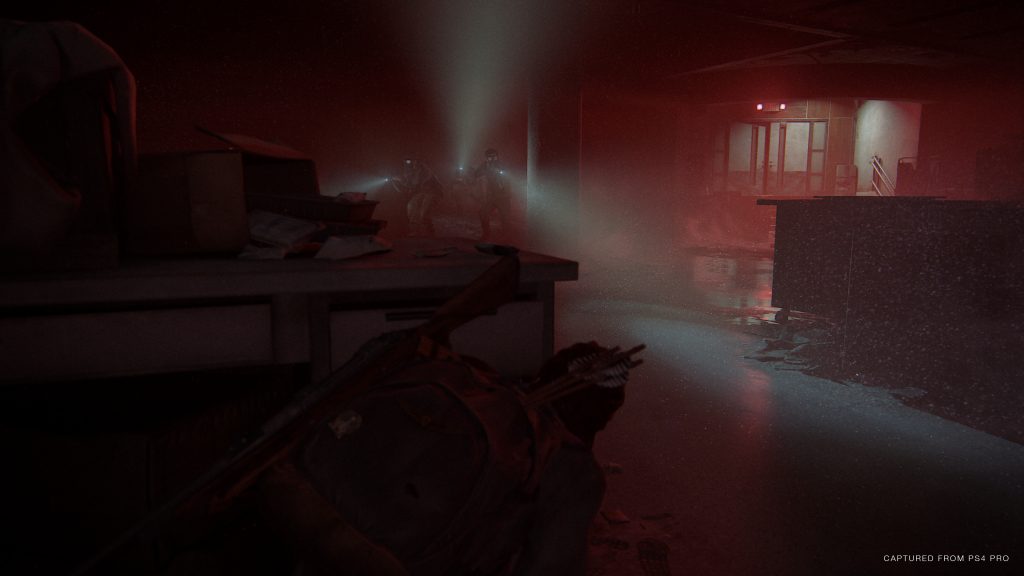
The world itself is diverse, with areas feeling lived in and real. Many of the city areas have been reclaimed by nature since the initial pandemic, which creates urban jungle like areas. Exploring these spaces has you finding spare parts for crafting, ammo and collectibles scattered among the broken lives that once lived in these houses or owned these shops. Glimpses of the previous life and indicators of people surviving the current world, are found in the form of notes, letters and journal entries. Some are personal letters to a loved one, while others are status reports from the previous government agents or current faction orders. I found myself actively searching an area to find more of these entries and reading these correspondents. Some even are clues to hidden areas, that you can seek out. Wandering off the beaten track, may task you with taking out some additional enemies, solve some minor puzzles, but in doing so, reward you with some extra resources or new weapons to help you survive. Locked doors may stand in your way, which could be as simple breaking an adjacent, finding a key or even finding a secret pathway to lead you into the building itself. Many of these are optional, but the potential risk of exploring these added areas, may be rewarding with some much needed supplies.
Crafting returns and allows you to forge makeshift weapons or health packs from items you find in the world. You can also upgrade your weapons at certain points of the game, by finding work benches dotted around the story. discovering spare parts allows you to enhance your guns, adding additional scopes, extending ammo capacity or reducing reload times, all helping you in combat scenarios. You may also find a number of training manuals, that open up a set of skill trees, in which you can customise your abilities. Finding these manuals are worth it, as some skills allow you to heal faster, improve aiming or allow you to craft stronger weapons. Resources needed for all these upgrades are limited, so you won’t be able to fully enhance your character in your first playthrough, but seeking out those hidden paths or exploring an enemy filled area to find those extra resources, may benefit you in the long-run.
Visually, The Last of Us Part II is stunning. It is easily one of the best looking games on PlayStation 4, but of the generation as a whole. From its detailed environments to the animation of characters, TLOU oozes in beauty. This beauty may be drenched in rain or covered in snow at times, but the fluid mechanics and the contextual movements over objects or when in enemy showdowns is exquisite. Bodies crumple when shot or react naturally to the world around them. Textures and models are highly detailed, with the likes of weapons, objects and clothing a marvel to look at up close, as you viciously take on the opposition with heavy weapons that break apart during use, their facial animation of pain and anguish leaves little to the imagination. Your clothing creases and folds, gets wet in the rain or when in water and drips with blood as you survive encounters. The wind shakes the trees and blows through the tall grass. Infected enemy encounters range from open areas to cramped, claustrophobic bouts of terror. The particle effects during these times are mesmerising, as you fill oncoming enemies with bullets, there fugal infected bodies break away, while the spore filled shamblers, burst in a haze of dust, blinding and disorientating you, making it hard to plot an escape.
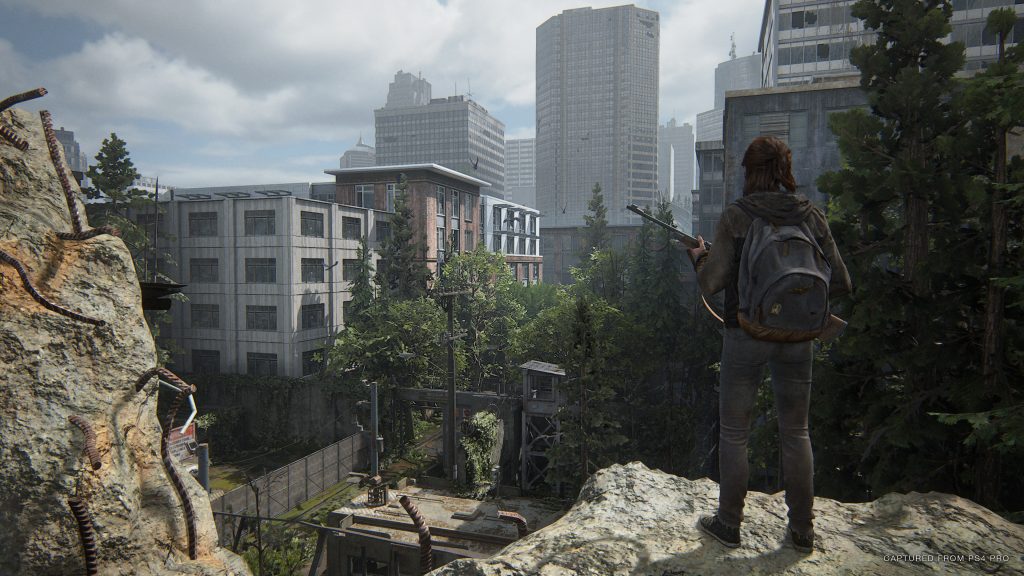
There are a huge number of accessibility options for all types of users too, that help customise and enhance your experience with the game. These rage from graphical filters that highlight enemies, while muting the background colours. Options for colourblind players, audible queues for when you are near jumps, intractable objects or items, as well as text options and even mechanical aides such as automatic puzzle solving and options for motion sickness, to name a few.
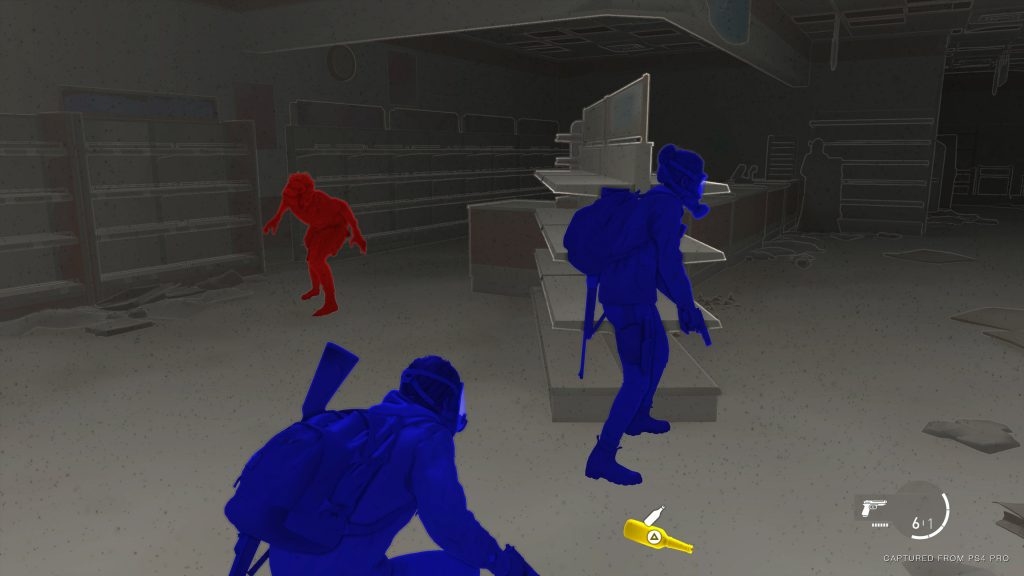
The facial and performance capture is fantastic, both in and out of cutscenes. You get a sense of what the characters are feeling at the time, be it in the action heavy brawls to the quieter moments, where characters just chat about the world around them. I found myself stopping in my tracks and spinning the camera around to focus on these moments during gameplay, or even jumping into photo mode to capture a moment, that looked truly stunning. Sound design is as good, with a haunting score by Gustavo Santaolalla used sparingly, but wonderfully during my twenty-five hour playthrough. An added piece to your journey, the music and sound never get in the way. It ramped up in times of action, it was sprinkled melodically during cutscenes too. You are left with many moments of silence though, as if to comprehend your actions in a previous section. There are chilling sounds from the echoing clicking noise of clickers, to the whistling style of communication implemented by the Seraphite faction, to all the impact form weapons, sounds of the environment and moans & groans of your fallen enemies, the sound design is phenomenal.
Acting is also a standout achievement throughout the game, with the interaction between characters believable. The main and supporting cast keep you interested throughout the campaign and at times, their interactions with each other made me stop and contemplate my actions. Ashley Johnson and Troy Baker return and both do a stellar job as Ellie & Joel, while newcomers Laura Bailey (Abby), Shannon Woodward (Dina) & Stephen A. Chang (Jessie) to name a few, who all have varying roles in the story, equally do a fantastic job. Although at the start of the game it may seem one-sided in your motivations, the added characters and context of the story, sheds some light on who these people are deep down. It also depicts a world with two sides to it. While looking at the game from the outside, characters may set out with the right intentions, but do their actions may not justify the means? That is to say, who is right or wrong in the world of The Last of Us? It is a horrifying place, filled with bad people, but while some characters can be seen as pure evil by their actions, what makes others characters any better or any worse than them? These are the types of thoughts that ran through my head as I played the game.
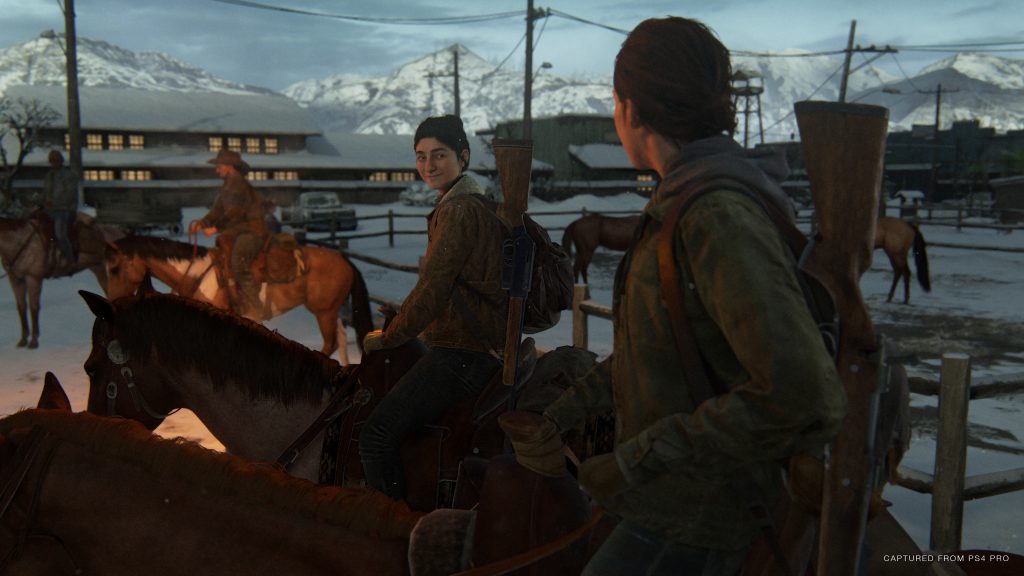
While I enjoyed my time with the game, there were plenty of times I felt uncomfortable. While the story continued, I found it hard to stop playing, as I wanted answers to the the questions posed throughout. Although it is mostly a linear narrative with an end point, certain anchor points give background on others. I wanted to learn more about this world. I found myself asking – “Who are the people that live here?”, as if in recognition of a bigger world out there. Not all the story beats hit the right notes for me, as there was a small bit of pandering and needless fleshing out of some story elements, that were wrapped up in a rushed way.
The Last of Us Part II is a fantastic game, with a gritty and realised world filled with interesting stories. It’s a technical powerhouse of graphical and sound design, while the acting is fantastic. If you are a fan of the first game, you will certainly like the gameplay improvements and world building in this title. I can see the story being decisive, but I was engaged right through to the end. Having one story arch may hinder its replayability for some, but it is a great game overall.
The Last of Us Part II is available for PlayStation 4 from June 19th!
Although you could have left The Last of Us as a self-contained story, I was glad to revisit the world again. It's like that difficult second album for a band or sequel to a classic film that pays off. But like other forms of media, there will be fans of the original and fans of the sequel. It improves on many of the aspects from the first title, but at its heart is a story focused game. It may not be perfect, but what it does right is expand on the world of The Last of Us.
